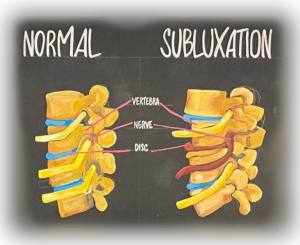It’s a rare person these days who say they aren’t feeling stressed, but is your level of stress impacting your quality of life? Would you like to feel more relaxed and less anxious? The good news is that there are measures we can take beyond deep breathing and meditation to release stress from our bodies, activate our nervous system, and start to feel more relaxed and ready to face whatever life throws at us.
Let’s take a look at how stress can present in our bodies.
Stress and the nervous system
First, it’s important to note that stress is not inherently bad. Stress research pioneer Hans Selye wrote, “Stress is not necessarily bad for you. It is also the spice of life, for any emotion, any activity causes stress…the same stress that makes one person sick is an invigorating experience for another…Complete absence of stress is incompatible with life since only a dead man makes no demand on his body or mind.”
But Selye identified two types of stress: eu-stress (from the Greek ‘true’ or ‘good’) and dis-stress (from the Latin ‘bad’).
That dis-stress can wreak havoc on your nervous system. You may have heard of our ‘fight or flight’ response when our brains perceive danger and give us a burst of energy to enable us to fight or run away. Our hearts may pound, our breath may quicken, and we may begin to sweat. Many of our cognitive processes also take a break while we get ready to fight that tiger or run away from that woolly mammoth.
That’s because our amygdala, the part of the brain responsible for emotional processing, sends out a distress signal to the hypothalamus, known as our brain’s ‘command centre’, and it prioritises the ‘fight or flight’ response as a matter of survival. The hypothalamus communicates with the rest of the body via our nervous system.
At one time, this response was crucial for our survival, but the stressors in our lives now aren’t tigers or woolly mammoths, they’re more likely to be an important work meeting, a traffic jam, or a disagreement with a loved one.
Unfortunately, our bodies can’t tell the difference between stressors, so they release the same hormones and trigger the same physiological response.
The nervous system stress response
Our autonomic nervous system, which carries the messages from our hypothalamus, is divided up into two parts: the sympathetic nervous system and the parasympathetic nervous system.
When we feel stressed, our sympathetic nervous system is engaged, acting like the accelerator in a car – releasing adrenaline and giving us that burst of energy. When the stressor has gone, our parasympathetic system kicks into gear, acting as a brake pedal, and promoting our ‘rest and digest’ function.
Unfortunately, in our modern world, the causes of stress are no longer a tiger jumping out of the bushes trying to eat us (actually, that’s probably fortunate!), but rather, ongoing stressors that don’t disappear after half an hour.
The problem with that is that our bodies can be triggering a stress response – and our sympathetic nervous system – for prolonged periods. This keeps our brain releasing stress hormones, and it can be difficult to calm the body and the brain.
This chronic stress can cause a range of health problems, including raising our risk of heart attacks or strokes, and it can also cause weight gain, and diseases that go along with it.
How stress impacts neurological function

As if these health risks weren’t enough to deal with, stress can also affect your posture. The fight or flight response often leads to a slumped posture, with the head dropped and the shoulders rounded. Conversely, studies have also shown that sitting with bad posture – at your work desk, for example – can also lead to stress, providing a chicken-and-egg situation.
Whether the stress causes the posture, or the posture causes the stress, that stress can then appear in the tissues around your spine, leading to a condition called a vertebral subluxation.
A vertebral subluxation is a spinal condition where one or more vertebrae move out of their ideal position, or their movement becomes restricted. You may notice discomfort in your back and neck, but sometimes you may not.
This can affect your neurological function, leading to symptoms like headaches, neck and/or back pain, hypo or hypermobility, poor sleep, poor focus and concentration, poor posture, acid reflux, and problems with your immune system.
Studies have found that even slight changes in posture can create significant stress on the cervical spine. One such study (Hansraj 2014) found that:
- At 15 degrees, the head weighs 27 pounds (12.3 kilograms)
- At 30 degrees, it increases to 40 pounds (18.2 kilograms)
- At 45 degrees, it weighs 49 pounds (22.3 kilograms)
- At 60 degrees, it exerts a force of 60 pounds on the cervical spine. (27.3 kilograms)
- At 90 degrees the force could not be measured.
We often see three types of stress that cause vertebral subluxation:
- Mechanical stress – usually caused by a sudden incident, such as whiplash from a car accident.
- Chemical stress – when a nervous system is overstimulated by medicines, nicotine, caffeine, or another substance, leading to cramping of the spinal muscles.
- Mental stress – a cumulative condition leading to muscle tension and cramping, which can cause more tension and cramping.
How chiropractic care can help
We work regularly with our patients to help relieve vertebral subluxation. We understand how it can act as a physical stressor because of the supporting structures connecting it to your vertebrae. Those stressed supporting structures act as a neurological and chemical stressor, resulting in a stress response in your brain.
By working to relieve the subluxation by using chiropractic adjustment, we can help to stop the chronic stress response and provide relief:
- helping to reduce the spinal inflammation
- releasing some of the damaging brain-to-body messages, providing optimal neural function
- restoring your body’s ability to self-heal
- getting you back to a state of rest and relaxation.
Are you suffering from stress and anxiety? Chiropractic Life can do a full neurostructural analysis to determine if there are any vertebral subluxations presents that could be creating structural shifts. We can also work with you to put a corrective care plan in place to help you start to feel and move better.
Find a Chiropractic Life location nearest to you.
References:
Hansraj KK. Assessment of stresses in the cervical spine caused by posture and position of the head. Surg Technol Int. 2014 Nov;25:277-9. PMID: 25393825.
https://spinalresearch.com.au/case-report-reduction-in-anxiety/
https://spinalresearch.com.au/new-case-report-shows-improvement-in-anxiety-and-cortisol-levels/
https://spinalresearch.com.au/mental-health-inflammation-and-the-chiropractic-research/
https://spinalresearch.com.au/the-stress-series-part-2-the-chiropractors-role-in-stress-management/
https://spinalresearch.com.au/the-stress-series-part-3-stress-and-posture/
https://spinalresearch.com.au/stress-test-with-dr-michael-hall/
https://spinalresearch.com.au/the-stress-series-part-4-stress-chiropractic-and-mental-health/
https://spinalresearch.com.au/the-stress-series-part-5-stress-chiropractic-the-gut-brain/

Recent Comments